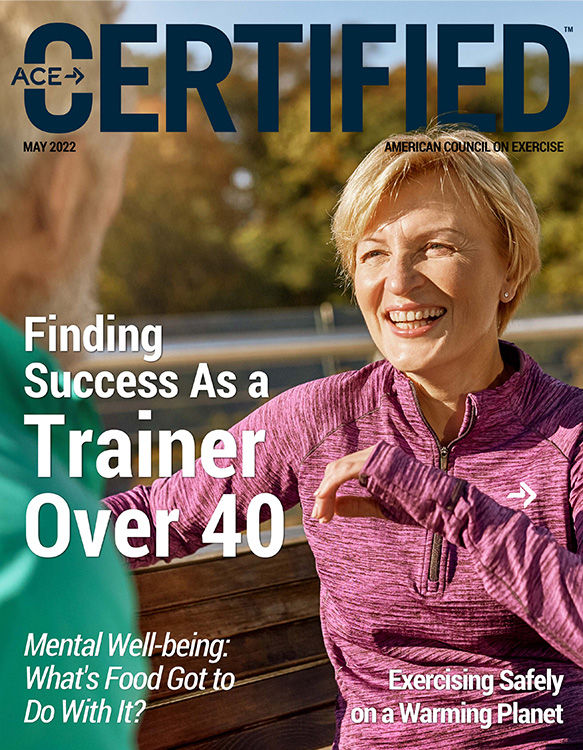
What is fear?
Where does it come from?
Why does fear so often speak louder than faith and confidence?
According to Simply Psychology, fear is a “natural and primitive emotion that can be experienced by everyone to some degree. It alerts us to the presence of dangers, whether real dangers or imagined.” Fear is also “composed of two primary reactions: biochemical and emotional.” Fear is not just a reaction to a real or imagined danger; it is also triggered and related to feelings of stress and anxiety.
The other two questions are, of course, harder to answer. As we reflect on the global events of the past two years and take a concerned look toward the future, understanding that fear relates to anxiety and stress makes it easier to recognize why so many professionals and clients are experiencing a palpable sensation of fear about the future following the COVID-19 pandemic. It also offers a path forward for addressing and managing those fears.
The Roots of the Fear
Fear, in general, is complex and stems from how we experience life. Fear can be acute or chronic, much like a physical illness or behavior. When COVID-19 entered our lives, forced us into isolation and required immediate changes in behavior, the complexity of fear grew.
At the onset of the pandemic, the threat of COVID-19 felt “mysterious” and triggered “anxieties much more than fear.” COVID-19 caused an erratic ripple effect because of the way it required humans to develop prolonged coping mechanisms due to the sustained impact of the threat. This is unlike most common situations in which fear is a present emotion and response.
A diverse group of global researchers in this area explain it like this: Emergencies, such as natural disasters (earthquakes, floods, fires, etc.) are often sudden and “ephemeral,” and require immediate defensive responses triggered by the instinct to survive. In contrast, COVID-19 was not a transient natural disaster. We had to adapt, and those adaptations became semi-permanent, as evidenced by continued mask-wearing and social distancing.
The pandemic triggered fear on multiple levels: financial, social, emotional, mental, physical and economical. In fact, say researchers, “the COVID-19 pandemic formed a serious multi-etiological global mental health challenge [i.e., one in which multiple causes are at play, including biolgoical, psychological and sociocultural] influencing every aspect of life and disrupting the social fabric.”
Czeisler and colleagues highlighted the development of these fears and anxieties in their recent survey work, which revealed that nearly 41% of survey respondents experienced at least one adverse behavioral or mental health issue (anxiety, depression, trauma-and-stressor-related disorder) related to the pandemic. These respondents also reported an increase in substance use to cope with the stress and emotional experiences related to COVID. The underlying message of these findings is that we must acknowledge that mental health concerns intensified during the past two years.
Post-COVID Fears
While the pandemic currently appears to be on a downward trend, its effects live among us. Or, conversely, we live among its effects. It is likely both and not a relationship that is symbiotic. Individuals are now battling what is referred to as “FONO” (fear of normal). This encompasses fears and anxieties regarding potential infections and illness spread as businesses, offices and schools are now (mostly) open again. Other anxieties related to FONO include reacclimating to social situations and office environments, and simply exiting the safety of the boundaries we were forced to set. Dr. Deborah Serani, psychologist and professor at Adelphi University in Garden City, N.Y., calls this “a global example of what’s called re-entry after trauma. The pandemic is a traumatic event.”
While some workplaces and business cultures shifted to allow for more remote work and support for mental health concerns to help individuals cope with returning after nearly 24 months of a continual battle, that is not the case for all. There is certainly a desire and hope that we return to normal, but what is normal now is not what we considered normal pre-COVID. What we have before us is an extraordinary opportunity to reinvent the way our clients experience our services and truly meet their needs in a post-COVID world.
Moving Forward
As we reflect upon the past 24 months and examine the findings of research related to COVID trauma, two primary questions underpin the process of moving forward:
- How do we address our own fears of the future as individuals who also experienced this trauma?
- How do we support our clients in this post-COVID world?
First, as we do in coaching behavior change, let’s take a step back and examine this from a different starting point. Let’s begin by changing the language we use: Instead of a “return to normal” or “back to normal,” we can start from the perspective of “acknowledging the difference.” There is little to no benefit to comparing what was to what is now. Things are forever different and with that realization comes the process of acceptance. While there may not be another need to quarantine, socially distance ourselves or wear masks, we are now conscious of how it feels to live under these constraints. COVID changed the way we work, live and learn. Start with the acknowledgement of the changes that we and our clients experienced and take one step forward.
Strategies for the Professional
You can begin your individual and professional journey of moving forward by using a combination of these suggestions and strategies:
- Recognize the pandemic as a traumatic event. We all experienced the pandemic differently, but it was a traumatic event in our lifetime that should be acknowledged as such.
- Take inventory of your feelings. Sit with your feelings, invite them in for a conversation, write them down or process them verbally with a family member, colleague or trusted confidant.
- Accept your feelings and be clear about your needs. We derive no benefit when we willfully ignore whatever emotions are surfacing. It is O.K. to say what you need and communicate your comfort level. Dr. Serani suggests using “I” statements such as “I’m not ready for that yet.”
- Tune in to your current stress levels. I like to do this as a regular practice by asking myself the following questions. You can create your own reflective practice if you do not already have one.
- How do I feel about ____________?
- What is working well and why?
- What is stressing me the most and can I control it or not?
- What are my top two action steps I can take to address this stress?
- What can I take off my plate?
- Prioritize self-care. These strategies are things we likely already practice but as the stress begins to mount, pieces of our wellness puzzles often get lost or forgotten. Move, meditate, nourish, sleep.
- Select (or create) an affirmation or mantra to practice. One of my favorites is from Brené Brown’s book Daring Greatly: “Courage starts with showing up and letting ourselves be seen.”
- Seek support. We all need support. Every person needs someone to lean on and every coach needs a coach. Seek support from those in your network and find power in being able to say, “I’m struggling with this right now and I’d like to talk about it.”
These are strategies I employ with clients and students alike and I find them to be effective, but it is not an exhaustive list. Other methods may be equally, if not more, impactful. Spend some time researching different ideas and choose the approaches that feel right to you and meet your needs.
Support Strategies for Clients
Supporting our clients likely doesn’t look much different than what we do to support ourselves. Doing so effectively comes down to two principles that already guide our practice: (1) meeting clients where they are and (2) responding with empathy and unconditional positive regard. Here are a few approaches I use with my clients:
- Ask thoughtful questions. We already do this as professionals, but it is not a bad idea to ask your clients how they are feeling about re-entry and what feelings or emotions they are experiencing around it. This is helpful because the fear and anxieties they may be feeling (and neglecting to acknowledge) can lead to barriers on their journey of change. The more you understand about a client's experience with fear and anxiety and how it may impact their health-related behavior-change goals, the more efficiently you can work together to break down barriers and collaborate on next steps to take action toward those goals. I like to give clients a “feelings inventory” that helps me understand how they are feeling in each of their dimensions of wellness. (Note: Using the Bonus Tool button at the top of the page, ACE Certified Professionals can access and download a Feelings Inventory that can be used to help clients identify how they are feeling.)
- Help them process their stressors. I like to use a stress inventory here as well. Find out what is going on with your clients (you can use questions like those outlined in step 4 above). (Note: Using the Bonus Tool button at the top of the page, ACE Certified Professionals can access and download a Perceived Stress Inventory that can be used to help clients identify and measure their stress.)
- Self-care reflection. When I start a session, I like to ask, “What have you done for self-care this week?” This gives me an idea of what types of self-care activities the client engaged in, as well as how it did or did not help. If they did not practice self-care, we dive into the reasons why, which serves to keep self-care at the forefront of clients’ attention.
- Consider a movement session. Some clients respond well to just walking and talking to process what they are experiencing. Or, this might take the form of a five-minute mini-yoga session or some dynamic flexibility exercises.
- Encourage intention setting. One practice many clients find enjoyable is setting a weekly or monthly intention. This can also be an affirmation or mantra, much like step 6 above.
- Check in frequently. As clients begin to emerge from the COVID fog, it may require you to engage with them more often than you did in previous months.
- Refer. Refer. Refer. If you suspect your clients are grieving or in a stage of fragility, rely on your referral network to give them the additional support they may need that falls outside of your professional scope.
The pandemic was a traumatic event, and it is not unreasonable or unexpected for any of us to be experiencing elements of anticipatory anxiety or fears about “what’s next” or “what if.” It can be hard to stay present and stay grounded. The most important thing you can do is offer yourself and your clients grace and space to process the feelings that surface. How we do that is multilayered and begins first with us, as the professionals, acknowledging our own fears and concerns and showing up to each session, in person or otherwise, as our authentic selves. Together, we can journey out of the fog.





 by
by 


